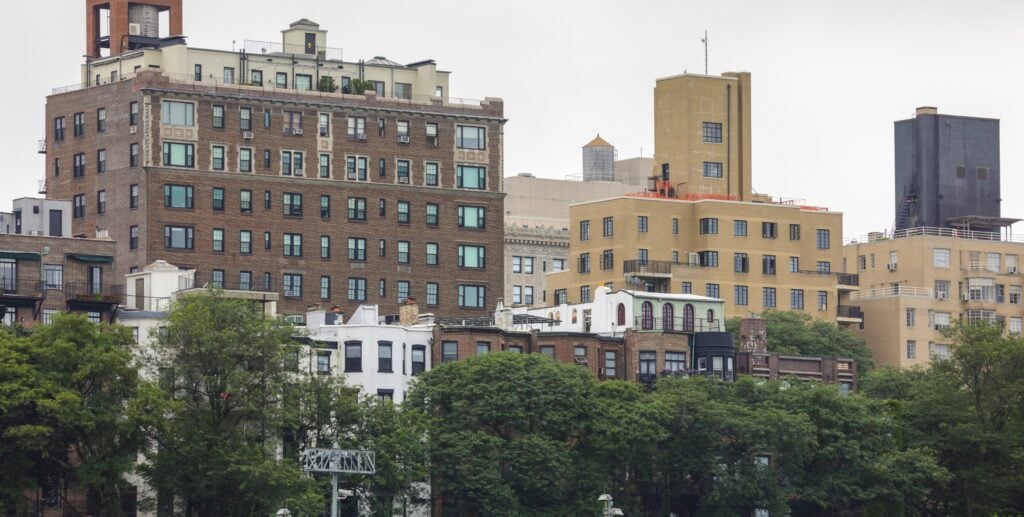Commercial real estate is facing a lot of stress. Many analysts and investors, myself included, expect to see significant price declines in most sectors in the coming year. But one particular type of commercial real estate is facing the biggest casualty potential of all: office space. And even if you don’t currently invest in office space, this huge asset class will have major implications for the broader real estate market and economy in the future.
The idea that the office market could crash makes sense on a logical level, as more people are working from home, but from a data perspective – it looks even worse.
Since 2019, net absorption, a key indicator that measures the balance of supply and demand for office space, has turned completely negative. In this time frame, tenants have vacated a whopping 140 million sq ft. 25 million of that lost square footage is due in 2023, so there’s no sign of slowing down. In fact, evidence points to this horror show continuing, with 67M sq ft of new supply projected to come online this year – making it the most new office space coming online since 2009. So there’s an overabundance of supply in the market, and it’s happening at the worst possible time—when demand is waning.
Demand is clearly down due to remote working. Although the total number of days worked from home has decreased since the high of the pandemic, This is still estimated to be 400% higher than pre-pandemic levels. While there seems to be some anecdotal evidence that remote work will decline a bit more in the coming years, it seems unfathomable to me that it will fall to somewhere around pre-pandemic levels.
The second reason demand is struggling is because of the macroeconomic environment. Most economists, including the Federal Reserve’s own analysis, believe that unemployment will increase in the coming years. With a stable or declining workforce, some businesses are looking to expand their office space. And even for those businesses that are hiring, relatively few are willing to sign long, expensive leases.
No matter how you look at it, companies are using less office space. This is reflected in most of the data I see (which comes from CoStar). Let’s dig into some of the most important indicators:
vacancy rates
Office vacancies are set to reach a record 13% by the first quarter of 2023, surpassing the previous peak in 2010. The pre-pandemic vacancy rate was about 10%, so it has risen by about 30% since then, but CoStar expects vacancies to rise even further. Their forecast shows the national office vacancy climbing to around 18% by 2026, and clearly, they don’t show a decline at any point in their five-year forecast.
Note some creation and absorption trends on the graph. Net absorption has been negative since the start of the pandemic and is expected to worsen in the coming years. Meanwhile, net deliveries (new supply) will peak in late 2023 before reaching almost complete stagnation in 2025 and beyond. Builders see the writing on the wall and are about to stop building office space, but units in the pipeline will still hit the market, leading to increased vacancy.
sublease
Sub-leases occur when an office tenant no longer wants some or all of the space and seeks another business to take over some or all of their lease. Currently, there is 216 million square feet of sublease office space available – more than double the pre-pandemic levels. San Francisco alone has 12M square feet—about 6% of the city’s entire inventory. New York City has 31M available, a truly staggering amount, but it’s proportionally less than San Francisco at 3.1% inventory.
The trend of increasing sublease availability is happening everywhere. Big market, small market, urban, suburban, you name it. This is as close to a national trend as we can see. Companies are trying to get rid of their office space and there is not enough demand. To me, this means that even though vacancies are at a record high, it’s not telling the whole story either. Even companies that have leases don’t want their leases out.
Rent
Office rents have recovered somewhat since the depths of the pandemic, but this is not expected to last for long. Higher vacancy rates, combined with sizable sublease availability, are likely to push rates down. For example, some sub-leased space is being offered Massive 30% -50% off on direct rates,
At $35.00 per square foot, the national average for rent is on par entering 2020. So it’s not terrible yet, but rents are projected to decline, which tracks with the other data we’re seeing here.

Will the market crash?
When you look at the above data and consider the logical consequence of current trends, it seems likely that office prices will drop by over 15% – which I would consider a crash. But how exactly would this happen?
Commercial properties such as office space are typically valued based on cap rates and net operating income (NOI). With higher vacancies and lower rents, NOI will almost certainly fall. This will automatically affect the evaluation. With higher interest rates and higher market risk, cap rates are about to rise. CoStar forecasts office cap rates nationwide to increase from about 7.2% to about 8.5%.

When cap rates go up, prices go down. As an example, if you had a property with an NOI of $100k, the value would be less than $1.4M at today’s 7.2% cap rate. If cap rates increase to 8.5%, that property would be worth about $1.18M—a drop in value of about 15%. But this is just the cap rate. If you combine the high cap rates with the potentially low ROI, things can get even worse. But how bad would it be?
CoStar estimates that the price per square foot for office space will decline by approximately 23% based on rising cap rates and declining NOI. And there’s some good evidence to support a drop of that much or even more. If you look at publicly traded commercial office properties (office REITS), we see a significant decline. The largest office REIT, Alexandria Real Estate Equities (ARE), is down more than 30% over the past 12 months. Another giant REIT, Boston Properties, is down 53% as of this writing. According to NAREIT – A REIT AssociationOffice REITs are down 21% in 2023 and down 41% over the past 12 months.
There is good reason to believe that private valuations will follow. Public REITs are constantly revalued, so investors seeing the writing on the wall have already pushed down public valuations. Meanwhile, private appraisals take longer to get right, because they only get reallocated on the sale. My general thinking is that private sector offices will see a similar decline – around 25-30%.
Another thing to consider is that bank offices are shying away from lending to investors, making recovery more difficult. Even if an investor wanted to move into the office space and help set a bottom for the market, financing may not be available.
Of course, there will be big changes. Some locations and sub-markets will do fine or see only minor declines, while other markets such as New York and San Francisco will see even larger declines. High-quality assets, such as those constructed during the last decade, are still performing well and have positive net absorption. Demand remains strong in many Sunbelt markets. Niche offerings like Life Sciences are doing well in Boston and San Diego and may continue to do so. But they are exceptions to a broad national trend.
conclusion
So what does all this mean for real estate investors who are interested in office space or not?
First, and most obviously, I would be extremely cautious about buying office space right now. I think private valuations are still very high and need to come down. If you’re going to try to buy office space in the coming years, you’ll need to buy at a steep discount from previous highs and underwrite with increasing vacancy and decreasing rents for the foreseeable future. Making that pencil would be a tall order, but if prices really drop by those quantities I think there could be opportunities when the dust settles.
Second, real estate around central business districts may be affected. Everything from retail to multifamily to single-family homes could be negatively affected by the same trends that are negatively affecting office space. I’m not saying that there is a causal relationship between office valuations and valuations of other asset classes, but because fewer people are moving into office, demand may fall for other types of real estate in the area. Similarly, there is a risk for banks that have a lot of exposure to office loans. This may spread to other commercial asset classes.
Third, I believe other areas of CRE will see larger declines, but probably on a smaller scale than in the office. I expect multifamily and retail to slide, but fundamentals indicate that office will be hit the most. Vacancy and rent in multifamily is not likely to be affected as hard as office.
Finally, remember that this is a broad nation-level analysis, but each region will perform differently. Big cities like NYC and San Francisco are being hit really hard, while some places in the Sunbelt may continue to grow.
get the best money
Quickly find and compare investor-friendly lenders who specialize in your unique investment strategy. It’s faster, free and easier than ever!

Note by BiggerPockets: These are the views expressed by the author and do not necessarily represent the views of BigPockets.





